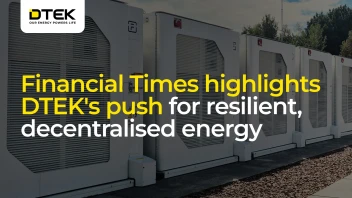“The state’s position itself is important for updating the infrastructure. The very recognition of the need for investment in infrastructure, as is the case with roads, is already a step forward. The state should say that investments in electric networks are also investments for the country”,said Ivan Gelyukh. According to him, such an approach will stimulate engineering, give jobs and many other opportunities for such business areas as construction and equipment manufacturing.
“The second step is the proper regulation of the industry. In all states around the world, parameters are created that should be of interest to investors. After creating the regulatory parameters, investment and development will begin. It can be both Ukrainian and foreign investments”, said Ivan Gelyukh. In his opinion, the project that is now published by the Regulator does not make the industry interesting for investors. With him, privatization of state-owned companies at market prices is not interesting. Therefore, the position of the state on regulation is important.
The expert emphasized that modern networks are digital networks, “smart” networks, these are networks that make it possible to automatically manage them. “The third step is a vision of a network upgrade strategy. About 60-65% of investments should be invested in updating existing assets: the replacement of power lines, in addition to the enhancement of equipment and substations. 40% of investments should be directed to modern automation and digitalization systems to make networks “smart” and less dependent on the human factor, “Ivan Gelyukh gave an expert assessment. Such networks will be more reliable, cheaper to operate, will cope with a large number of market participants and, as a result, reduce the cost of electricity transmission.
“These are three key vectors that will make it possible to realize the development of network infrastructure in the country and, as a result, the economy as a whole,” summed up Ivan Gelyukh.
European countries, particularly France and Spain, are developing economic recovery programs. To this end, national regulators in the energy sector, in order to maintain and help ODA, are planning to revise the parameters of incentive tariff formation for 2020-2022 in the direction of improving conditions for energy companies. As you know, investments in the energy infrastructure of networks have a multiplier effect and are the basis of the economy, job creation, GDP growth, and tax increases.







